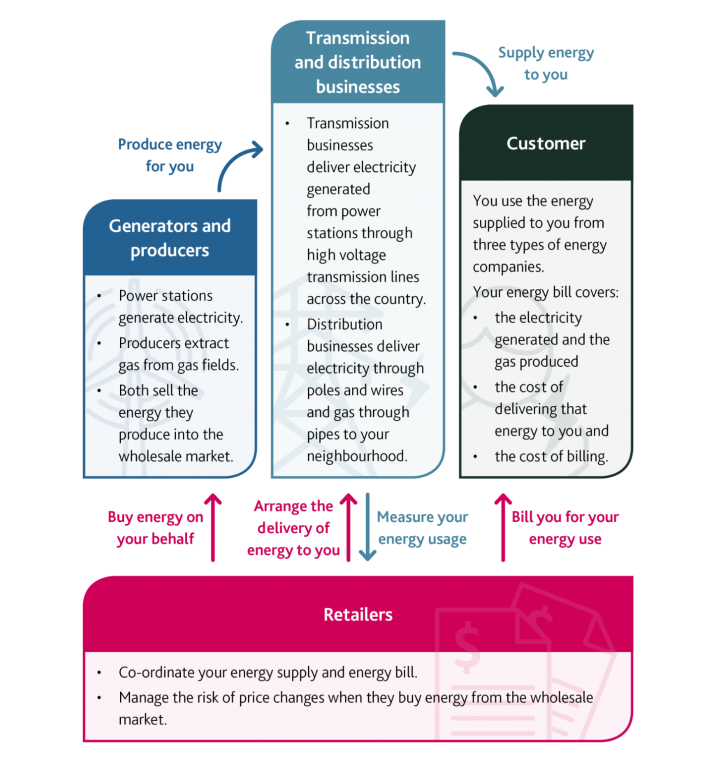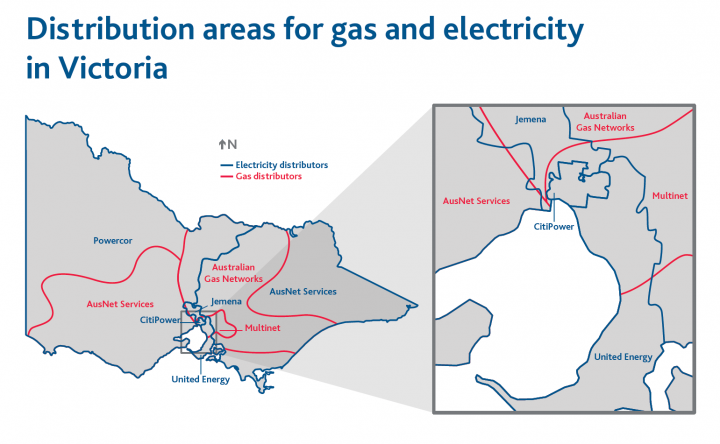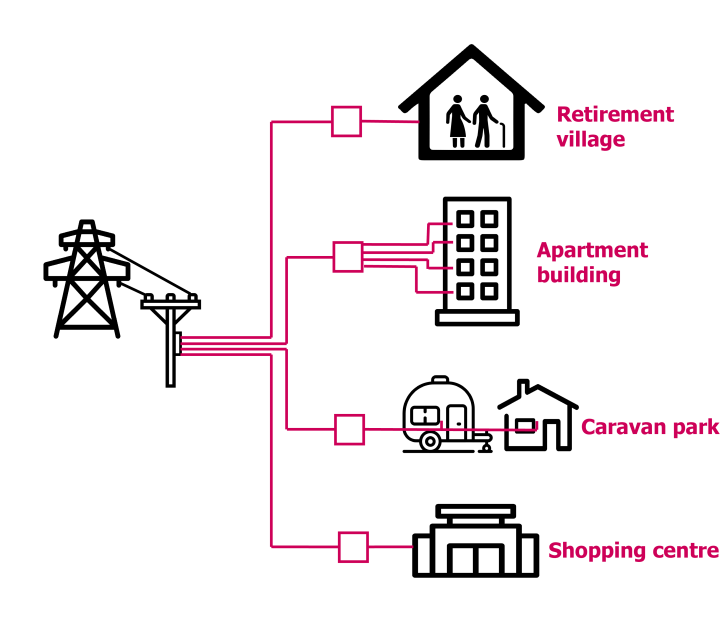Victorian Energy Market report 2018-19
Published 26 November 2019How is my energy supplied?
Your electricity and gas are supplied by three different types of energy businesses: generators and producers, transmitters and distributors, and energy retailers.
The figure below shows how different energy businesses interact to provide you with energy.

Generators and producers
In Victoria, most of the energy we use is generated or produced at a large-scale and then distributed through electricity networks or gas pipelines to your home or business.
Electricity is mainly produced by power stations from sources including coal, wind, sun, water and gas.
Large-scale generators are required to operate with a licence in Victoria, unless exempt under the rules. Licensed businesses can generate and sell electricity directly to energy retailers through the wholesale electricity market.
Increasingly, customers are generating their own electricity through solar panels or even small-scale wind turbines. According to the Clean Energy Regulator there are more than 421,000 small-scale solar PV installations in Victoria.
Gas is extracted by producers which then sell it through the wholesale market or bilateral contracts. The gas is transported through transmission and distribution pipelines to homes and businesses.
Transmission and distribution businesses
Energy is supplied to your home by a different business to the one that bills you for energy. The businesses that deliver your energy through pipes, poles and wires are called distributors.
Distributors measure the amount of energy each customer uses and pass that information on to the retailers.
They charge your retailer for the cost of delivering energy to your home. Retailers use this information to calculate and issue your bill.
There are five electricity distributors and three gas distributors that own and operate the energy network in Victoria. These distributors operate in different parts of the state (figure 1.2).

You can find out who your electricity distributor is by visiting https://www.energy.vic.gov.au/electricity/electricity-distributors, or checking your electricity bill. You can also find your gas distributor on your latest gas bill.
Retailers
Retailers coordinate your energy supply and energy payment.
In 2018–19, depending on where you live in Victoria, you can expect to have up to 25 licensed electricity retailers and 16 licensed gas retailers competing to sell you energy (residential and small business customers).
You have been able to choose your electricity and gas retailer since 2002.
The price your retailer charges you includes:
- the wholesale cost of energy – retailers estimate how much they expect to pay for wholesale energy (accounting for changes in the price of wholesale energy over time)
- the cost of delivering it to you – they calculate how much it costs to deliver energy to their customers (the cost of distribution)
- the cost of renewable energy and energy efficiency schemes
- the retailers’ cost of billing, marketing and customer service, as well as their profit margin.
Exempt persons
In 2017–18, the Victorian government revised the framework that applies to certain entities that operate electricity networks without requiring a licence.
Entities operating exempt networks must now register with the commission, and comply with additional obligations that protect customers.
Embedded electricity networks are private networks that are often found in buildings and premises such as apartment buildings, shopping centres, caravan parks, retirement villages and residential parks.
If you occupy one of these premises, then you may be sold and supplied electricity by the embedded network operator/owner. Embedded network operators/owners buy electricity in bulk through a ‘gate’ meter and on-sell and supply it to individual customers within the embedded network.

